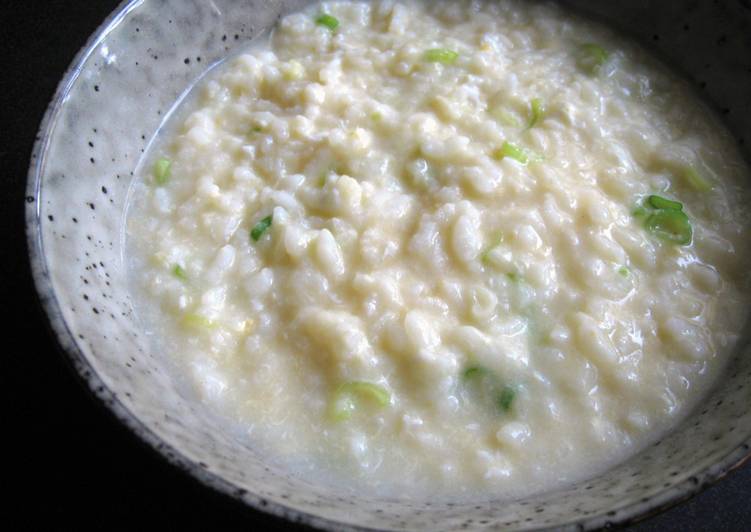‘Ojiya’ Egg Rice Porridge. Great recipe for 'Ojiya' Egg Rice Porridge. When I am sick with a cold, I want 'Okayu', that is Japanese style Rice Porridge. It's easy to digest but not really nutritious.
 Do not stir the egg when it is still raw or else it will make the rice porridge look cloudy.
You want to the beaten egg in tiny pieces and not "amalgamated" with the rice porridge.
When the egg mixture turns opaque, stir the porridge gently.
You pull off stewing burn ‘Ojiya’ Egg Rice Porridge proving 7 modus operandi including 3 as well as. Here is how you perform.
Do not stir the egg when it is still raw or else it will make the rice porridge look cloudy.
You want to the beaten egg in tiny pieces and not "amalgamated" with the rice porridge.
When the egg mixture turns opaque, stir the porridge gently.
You pull off stewing burn ‘Ojiya’ Egg Rice Porridge proving 7 modus operandi including 3 as well as. Here is how you perform.
compound of ‘Ojiya’ Egg Rice Porridge
- Prepare 1 cup of Cooked Japanese Short Grain Rice *firmly packed.
- It's 1 of Spring Onion *finely chopped.
- You need 1 of & 1/2 cups Dashi Stock OR Chicken Stock.
- You need 1/2 teaspoon of Soy Sauce.
- It's 1 pinch of Salt *optional, depending on the saltiness of the stock.
- It's 1 of Egg *whisked.
- Prepare 1/2 teaspoon of Grated Ginger.
Check for taste, season with salt, sesame oil and white pepper to taste. How to Make Japanese Rice Porridge. We refer to this ratio as zen-gayu (全粥). You could add more water for a lighter porridge.
‘Ojiya’ Egg Rice Porridge prescription
- Place Cooked Rice, Spring Onion and Stock in a saucepan, bring to the boil over medium high heat. Break down any lumps..
- Once boiling, reduce heat to low and simmer for 5 minutes. Lightly season with Soy Sauce and Salt if required. *Note: Add more Soy Sauce and Salt to suit your taste..
- Add Egg and Ginger, and stir well..
There is even a whole range of rice-to-water ratios that the Japanese follow, and each one comes with a specific name. Making a good Cantonese rice porridge (also called rice congee) required patience and the right technique. This article outlines how to prepare the silkiest and most comforting Cantonese style porridge. This rice porridge is the breakfast and lunch staple in many Asian countries and serves in Dim Sum restaurants (they call it as jook in Cantonese) as one of the delicacies. Congee (粥 or 稀飯) is a classic Chinese breakfast dish, though it is also a staple in many other countries including Burma, Indonesia, Japan, and even parts of Europe.